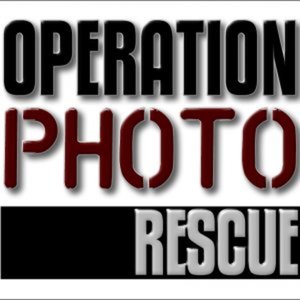 With the help of Operation Photo Rescue, a non-profit, volunteer network of photographers, image restoration artists, and graphic designers, Fondulac District Library (FDL), IL, recently launched “Saving Memories,” a program to help community members digitize and restore photographs that were damaged when 24 tornadoes touched down in Illinois on the night of November 17.
With the help of Operation Photo Rescue, a non-profit, volunteer network of photographers, image restoration artists, and graphic designers, Fondulac District Library (FDL), IL, recently launched “Saving Memories,” a program to help community members digitize and restore photographs that were damaged when 24 tornadoes touched down in Illinois on the night of November 17.
“The response to the disaster in the community was almost immediate. Everybody wants to do something,” said Genna M. Buhr, public services manager for FDL. Many local churches and other organizations were already processing donations of clothing and food, she explained, so FDL staff searched for other ways they could help.
They began by compiling an extensive storm information and assistance page on the library’s website, listing contact information for local emergency management agencies, shelters, places to obtain emergency supplies, and local insurance companies. FDL’s new building, which had just opened earlier in the month, was undamaged, so the assistance page also notes that the library has power, public computers, free Wi-Fi, copiers, scanners, faxes, and a video camcorder that patrons can check out if they need to document storm damage to homes or other property.
Volunteer Heather Evans of Germantown Hills, IL suggested that the library could also offer to help community members digitize damaged photos, and offered the use of her professional copy stand equipment for the project.
“[Evans] said, ‘I just want to help anyway I can,” Buhr explained. “We’re a library, we have space, we have the ability to get the word out and to organize this into something a little bigger.”
FDL began by reaching out for donations of USB flash drives for the project, and the response was overwhelming. In addition to individual donations, local marketing and communications firm Simantel alone donated about 2,000 drives. Tech Logic, a developer of automated material handling systems for libraries, donated hundreds more.
 Buhr began looking for information about how the project could help restore cherished photographs once they were digitized, and ultimately connected with Operation Photo Rescue. Founded by Dave Ellis and Rebecca Sell in the wake of Hurricane Katrina, which devastated the Gulf Coast in 2005, the El Dorado, Kansas-based charity has grown into a worldwide network of thousands of digital photo restoration experts, who volunteer their time to help victims of fires and natural disasters.
Buhr began looking for information about how the project could help restore cherished photographs once they were digitized, and ultimately connected with Operation Photo Rescue. Founded by Dave Ellis and Rebecca Sell in the wake of Hurricane Katrina, which devastated the Gulf Coast in 2005, the El Dorado, Kansas-based charity has grown into a worldwide network of thousands of digital photo restoration experts, who volunteer their time to help victims of fires and natural disasters.
“The library is taking some of the first steps of digitization, and then we’re going to work with Operation Photo Rescue to have those pictures restored. They can digitally remove water damage, rips, tears,” Buhr said. “The biggest thing right now is to capture them digitally before further damage occurs” from mold, for example.
Operation Photo Rescue regularly organizes “copy runs” to disaster areas, where volunteers help with digitization efforts prior to performing restoration work. Recent copy runs include a spring run hosted by New York City’s School of Visual Arts for victims of Hurricane Sandy, for example. And, in October, the organization worked with Oklahoma’s Moore Public Library to help locals whose photos were damaged in the May 20 tornadoes.
Operation Photo Rescue President Margie Hayes described these copy runs as “heartwarming…. Some of these people don’t think their photos are going to be saved, and some of them, that’s the only picture they have of a relative. It’s really quite rewarding.”
In many cases, “libraries are by far our best bet,” for hosting these runs, said Hayes added. “For one, we’re a non-profit, and they have no problem, as long as they have a room available, letting us come in. And they’re really so helpful” with organizing the events.
However, these copy runs are funded by donations, and as a volunteer-based non-profit, they cannot respond immediately to every disaster. So FDL’s digitization efforts will be a significant help, said Hayes. In fact, this is the first time Operation Photo Rescue has had a partner organization conduct all of the digitization groundwork.
“We usually can’t do runs in the winter, plus, we were just coming off of four runs [in 2013]. So what worked out really well this time was that the library contacted us, and they already had a professional copy stand to do digital copies of the photos,” Hayes said. Copy stand digitization, which utilizes a high pixel count digital camera with a macro lens, is much better suited for digital photo restoration than scanning.
“When you have a damaged photo, scanning can make it look even worse” and more difficult to digitally restore, she explained.
FDL plans to offer the digitization service for a few months, as a series of scheduled events, Buhr said.
“I really want to make sure we get a lot of awareness out for people that can benefit from it,” Buhr said. “In the first days after a tornado, they’re not going to be hearing about it. They’re preoccupied with a lot of other things and may not even have power yet…. It might be two months before someone is reunited with a picture that they want to save. I foresee it going into the spring [of 2014] at least.”



Matt, thanks for the great writeup! Your article will help in getting the word out about Operation Photo Rescue’s services to libraries around the country.